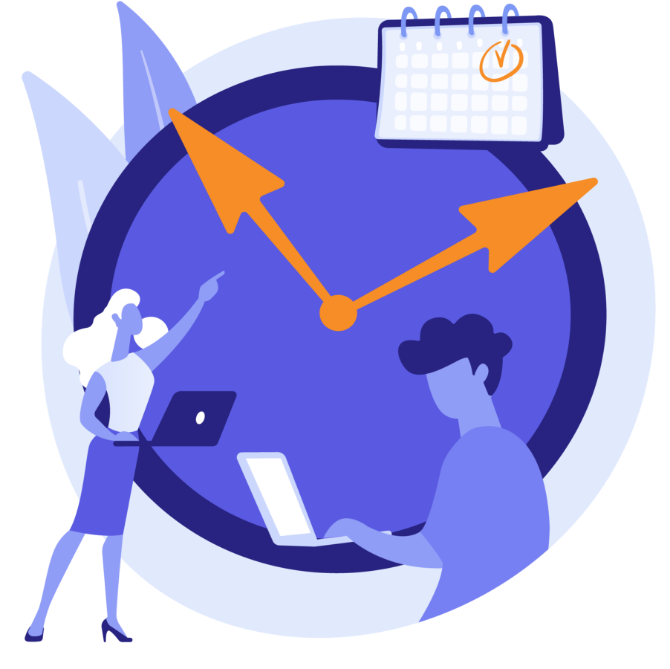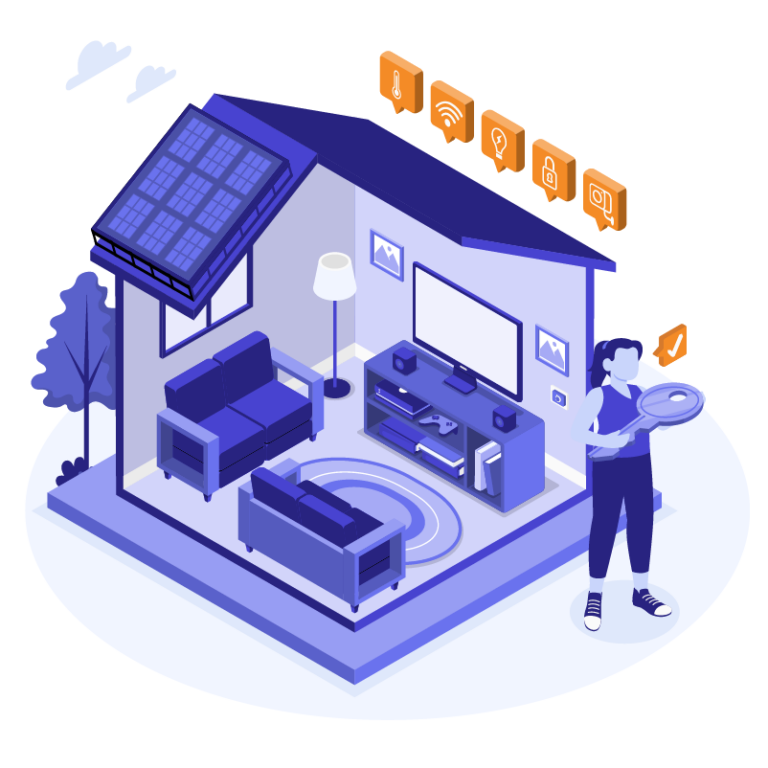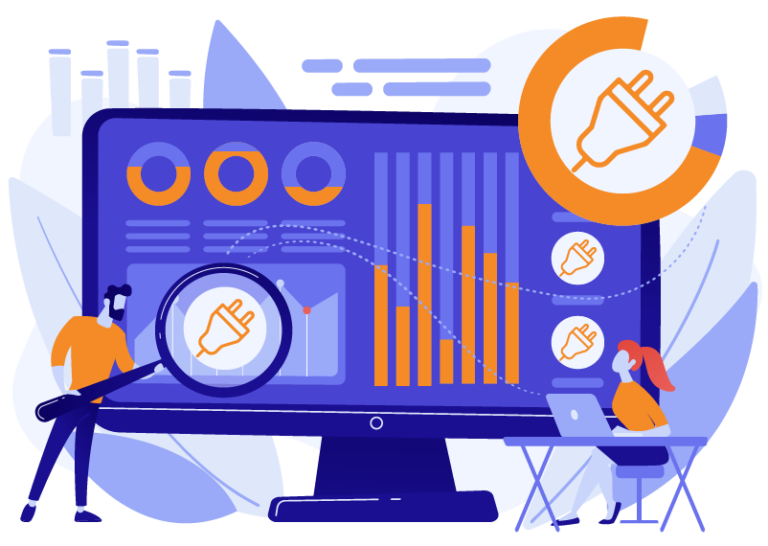Time and again, the agencies who come to us at White Label Agency do so in a state of panic. The cause varies. Sometimes an eager project manager has taken on board more work than internal developers can manage, or a go-to development freelancer has failed to deliver. However, all too often, the agency has failed at the basic task of time managing the project. At White Label Agency we pride ourselves in our ability to meet development deadlines and we guarantee the timeliness of our first review. Based on our decade of experience in delivering WordPress projects, let me share with you the process we follow in time-estimating development projects.
For further reading, see our article on how we cost design and development in our project quotes.
Let’s begin by looking at how we manage the design aspect, as this is generally more problematic than development from a time management perspective.
Web Design
The question: To design or not to design
In smaller agencies, it’s quite common to skip using design tools and instead dive right into coding the website based on the favored design ideas. This might sound surprising, but it actually makes sense when you consider the people behind these agencies. Usually, the founders have a solid understanding of coding HTML and CSS, a good eye for design, and the ability to sell their services effectively.
However, our suggestion is to create separate design files before starting the coding process. Because it saves time when it comes to getting feedback from clients. It’s rare to find clients who are happy with the initial design. With design files, you can quickly make changes to the look of the website based on client feedback, without having to change any code. This saves time and avoids getting stuck in a loop of last-minute design changes. It’s a good idea to wait for the client’s approval of the designs before moving forward with development.
If your client comes with a late design change request, you can charge them for that, since you’ve already agreed on designs. This way you can keep pricing fair and square.
Breaking down the design time
In our quest to break down the design time, our web designer Elene provided me with approximate timeframes for custom design elements.
The minimum set
Usually, the minimum set of templates is:
- Homepage: Static – 10-12h, with hover effects & animations 12-16h
- Internal page (for all other informative content) 6-8h
- Contact Us page 3-4h
The informative set
- Services overview page 4-6h
- About Us page 3-4h
The eCommerce set
- Product category page 8-10h
- Individual product page 8-10h
- Checkout page 8-10h
Note that every additional resolution (mobile or tablet) will require 2–4 hours per page depending on the complexity of each of them.
Development
White Label Agency has worked with over 200 digital agencies and the accuracy of estimating development time has increased over years, but it has been very consistent for a long time.
Let’s break down the development process of WordPress projects.
Page templates
A simple homepage usually has 3-5 sections, a header, and a footer. The header and footer stay the same on every page, so you only have to create them once.
Typically, it takes around 1-2 hours to create one section, assuming it doesn’t have any special features.
So, if you have a 5-section template, it usually takes about 6-8 hours to put it all together.
Content migration
When revamping existing websites, it’s important to consider the time required for content migration. With WordPress, the goal is to make all content easily editable through the admin panel. This includes not only articles and marketing messages but also smaller elements like button text, links, tiny icons, etc.
The time spent on content migration varies depending on the number of pages. It can range from as little as 15 minutes to several hours.
Einar, our CEO shares his recommended approach:
“As a general guideline, we estimate around 6 hours for every 20 pages, which averages to about 20 minutes per page.”
Front-end

Front-end features play a significant role in the overall development time of a website. Nowadays, it’s uncommon to come across websites that only consist of plain text and images. People desire additional features that add vibrancy and interactivity to their websites.
This section focuses on popular features like sliders, parallax effects, SVG animations, and other trendy elements in web design. We will discuss each feature individually, providing insights into the time required for their implementation.
It’s important to note that we will only cover some of the most common front-end features of WordPress projects. Keep in mind that the hours mentioned for each feature are in addition to the standard time required for creating a template.
- Custom Responsive Menu – 2-4h. If you’re using pre-built responsive menu options from frameworks like Bootstrap or Foundation, it won’t require much additional time as they are already well-established. However, if your client desires a unique and customized menu design, it will require some extra effort.
- Pop-up – 2h. Pop-ups are not hard to make but to program what triggers them can take some time.
- Slider – Using plugins like Slick Slider, a typical slider can be done in 2 hours. However, more complex sliders combining images and videos may take up to 8 hours.
- Custom Scroll – Implementing a custom scroll feature can be done with plugins or manually with JavaScript, taking an extra hour or two.
- Custom Animations – Basic custom animations typically require 2-6 hours to implement.
- Background Video – Adding background videos is straightforward and usually takes around 1 hour.
- Parallax – Implementing parallax effects with libraries like Parallax.js or GSAP can take approximately 4 hours.
- AJAX “Load More” Button –Working with AJAX in WordPress and creating a “Load More” button can be done in 2 hours.
- AJAX Filter –Implementing AJAX filters, often used in WooCommerce projects, typically takes between 4 and 8 hours.
- Preloader – Creating a preloader usually takes around 1 hour, unless it involves custom SVG animations or special requirements.
- Form – Most forms can be created within 2 hours, although more complex forms with conditional logic may take up to 4 hours.
Back-end

When it comes to the back-end, the scope of development work can vary more than it does on the front end. As with front-end features, I won’t discuss extreme examples. Tasks like building a custom integration with Salesforce, alone could easily take 100+ hours. Instead, I will try to cover some of the most in-demand features.
- WooCommerce – This powerful e-commerce plugin requires about 8-16 hours on average for customization. It’s worth noting that WooCommerce projects typically involve more templates than non-e-commerce websites, such as templates for the cart and checkout pages, which increases the overall project duration.
- WPML (The WordPress Multilingual Plugin) –If you want to make your website multilingual, setting up WPML can take around 4-12 hours, depending on the size of your website.
- Event Calendar – A popular plugin for managing events, Event Calendar usually requires 8 hours or more for customization. While it offers flexibility for developers, adjustments still take time, especially considering the additional templates that may be needed.
- Premium Theme – Installing and customizing a premium theme, such as Divi or Avada, typically takes around 8h. It’s important to note that working with premium themes may require more time than expected, especially for those who are new to the process.
- User Role Management – Adding roles, groups, and managing permissions, which is common for larger websites, can take between 4-16 hours. The complexity of the role structure influences the development time.
Final thoughts
By managing the time requirements of a development project in a structured manner, your agency will likely be doubly rewarded, by way of more satisfied clients and a happier design and development team. Importantly, an agency’s ability to meet deadlines is becoming an increasingly important point of competitive advantage with the shift to freelancing that is currently underway. While it’s cheaper than ever to get design and development work done, a lot of this work is being turned in late and end clients are wary of this. Building a proven track record in the industry of delivering in spec and on time allows an agency to command higher prices and be more choosy about the work they take on.
For further information about quoting a development project, I recommend further reading:
If your agency would like to partner with an outsourcer that meets its deadlines on time, every time, feel free to contact our sales team at WLA. Over our ten-year history, we’ve helped over 600 development agencies grow their business, delivering over 10,000 websites in the process. We’d be delighted to add your agency to our ever-growing list of success stories!



